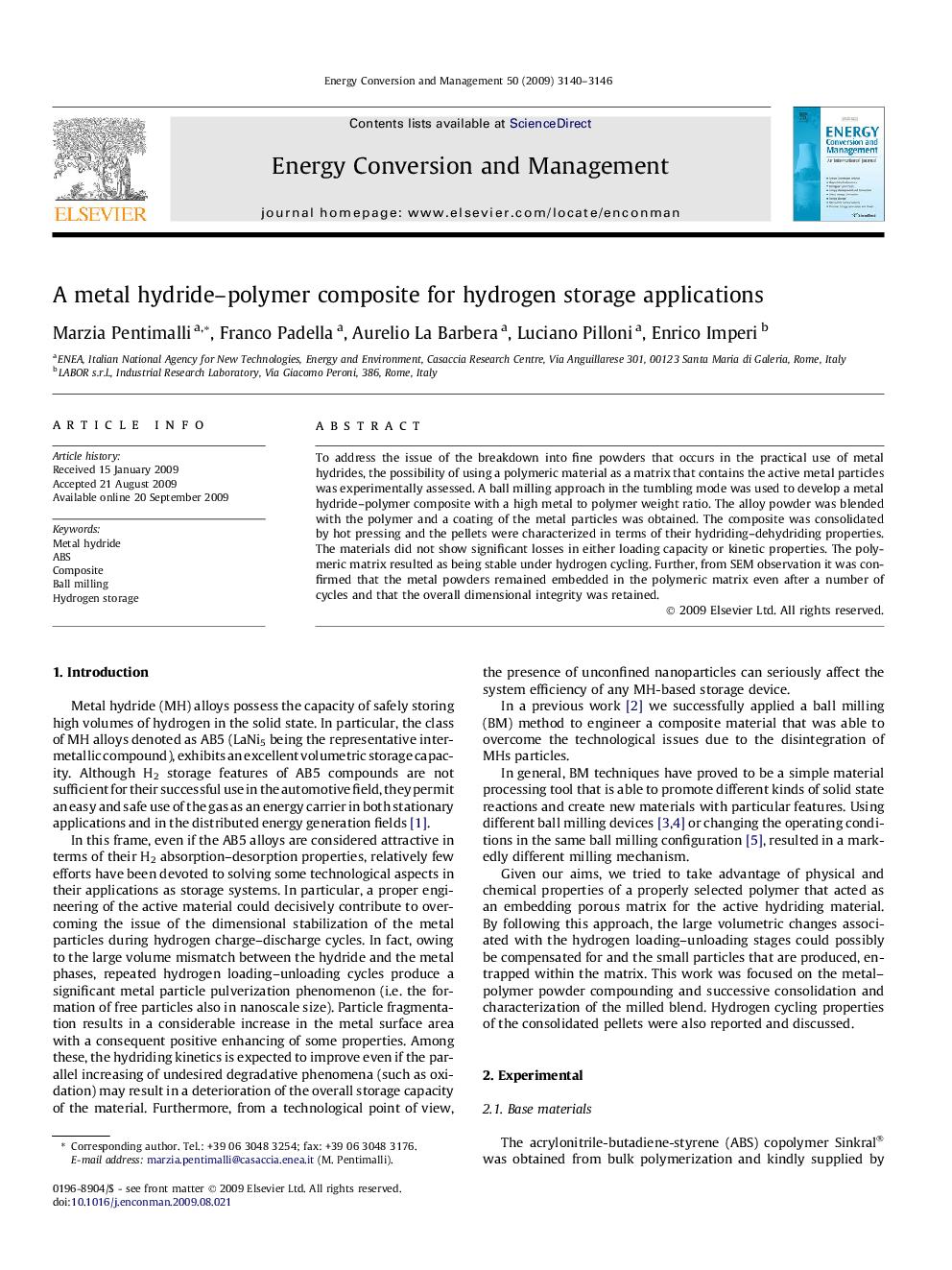| Article ID | Journal | Published Year | Pages | File Type |
|---|---|---|---|---|
| 761722 | Energy Conversion and Management | 2009 | 7 Pages |
To address the issue of the breakdown into fine powders that occurs in the practical use of metal hydrides, the possibility of using a polymeric material as a matrix that contains the active metal particles was experimentally assessed. A ball milling approach in the tumbling mode was used to develop a metal hydride–polymer composite with a high metal to polymer weight ratio. The alloy powder was blended with the polymer and a coating of the metal particles was obtained. The composite was consolidated by hot pressing and the pellets were characterized in terms of their hydriding–dehydriding properties. The materials did not show significant losses in either loading capacity or kinetic properties. The polymeric matrix resulted as being stable under hydrogen cycling. Further, from SEM observation it was confirmed that the metal powders remained embedded in the polymeric matrix even after a number of cycles and that the overall dimensional integrity was retained.
